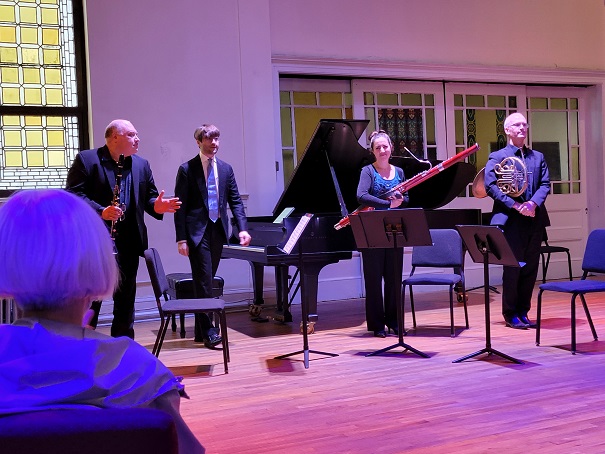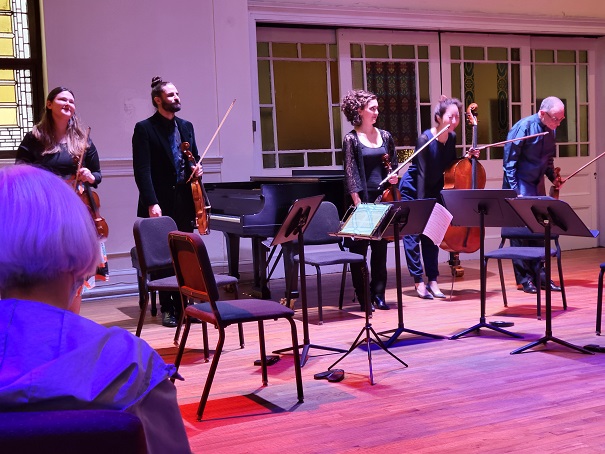Concert Diary: “Opus One” with the Jupiter Players
October 25, 2021
New York, N.Y.
Opus numbers aren’t used much by composers these days, but traditionally they generally indicated the order that a composer’s works were published. It was usually the composers themselves who chose which published works received opus numbers and which did not. Very consciously, composers used opus numbers to establish their legacy: Opus numbers were a way of separating mature work from the juvenalia, and serious compositions from the more trivial stuff.
Take Beethoven, for example. Although Beethoven’s compositions had been published since he was 11 years old, he was 24 before he began assigning opus numbers to these publications. If all of Beethoven’s music is weirdly spread out over the course of a year, Opus 1 doesn’t appear until February 10. Beethoven compositions without opus numbers were later assigned WoO (“Werke Ohne Opuszahl” or “works without opus numbers") numbers.
Brahms was notoriously concerned about his legacy. He destroyed many compositions that didn’t meet his high standards, and published others without opus numbers. Brahms published a total of 21 Hungarian Dances — some of which are quite familiar — without opus numbers. Despite their fun and popularity, to Brahms they were not to be in the same category as his symphonies.
So when the Jupiter Symphony Chamber Players presents a program called “Opus One,” they know and we know that these are not the composer’s first compositions, but the first ones they thought worthy of their legacy.
Although I had heard the name of Swedish composer Franz Berwald, I didn’t know much about him. He was born in 1796 six months before Schubert, and died in 1868, about seven months before Rossini. According to Wikipedia, Berwald “made his living as an orthopedist and later as the manager of a saw mill and glass factory.” Although Berwald had been composing since about the age of 20, his Opus 1 dates from 1819. This is a Quartet in E♭ for the peculiar combination of Piano, Clarinet, Horn, and Bassoon. (A performance in Amsterdam using period instruments is available on YouTube.
In listening to the Berwald Quartet before the concert, and then again during the concert, I found it somewhat problematic. There’s nothing intrinsically wrong with a composition being episodic, but the episodes in this one seemed ad hoc to me. At least to my ears, the mix of different influences and ideas didn’t cohere in any evident way, and the dramatic ending seemed unearned. But those problems can’t be attributed to clarinetist Vadim Lando, pianist David Kaplan, bassonist Gina Cuffari, and horn player Karl Kramer::
The second Opus 1 composition in the program was Samuel Coleridge-Taylor’s Piano Quintet in G Minor. Coleridge-Taylor was born in London in 1875 to an English woman and a father who descended from American slaves who were freed by the British following the end of the Revolutionary War. Coleridge-Taylor began learning music at an early age and published his Opus 1 Piano Quintet in 1893. When he toured the United States in the early 1900’s, he was received at the White House by President Theodore Roosevelt, and musicians in New York City called Coleridge-Taylor the “African Mahler.” He died of pnemonia at the age of 37; his Opus 80 was published in that year.
The Coleridge-Taylor Piano Quintet is a fully mature work, which boldly announces itself with a couple loud chords and a romantic melody that expresses both jubilation and triumph. The second movement is a sweetly poignant Larghetto, followed by a tuneful and dancelike Scherzo that becomes rather raucous before a more relaxed Trio section. I found the finale surprisingly tragic and hard-edged, giving way only occasionally to more lyrical passages and a startling five-voice fugue before a dramatic coda. (A recent recording of the Coleridge-Taylor Piano Quintet and two other works is available on the album Uncovered, Vol. 1, the first in a series of recordings of music of Black composers.)
Antonín Dvořák is definitely the most famous composer on today’s program, yet his Opus 1 — a String Quintet in A Minor of 1861 — is relatively obscure, and overshadowed by his two subsequent string quintets of 1875 and 1893. A slow opening soon gives way to an intricate lyrical movement, followed by a lovely Lento that ebbs and flows very nicely. The finale achieves a grand sweep that perhaps goes on a little too long before concluding.
For someone who later incorporated folk music of his native Bohemia in his compositions as well as music of the New World when visiting America, the oddest characteristic of the Dvořák’s Opus 1 String Quintet is that it is missing all that. It is not recognizably Dvořák, and perhaps that is the reason for its neglect.
From left to right, the string quintet consisted of violinist Ariel Horowitz, violist Edwin Kaplan, violist Lauren Siess, cellist Christine Lee, and violinist Mark Kaplan:

